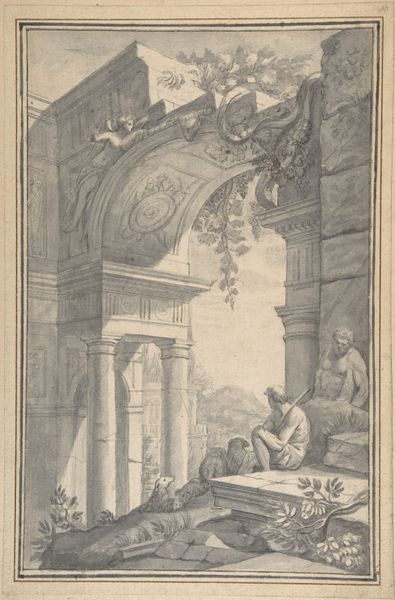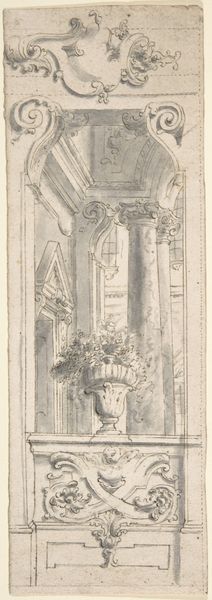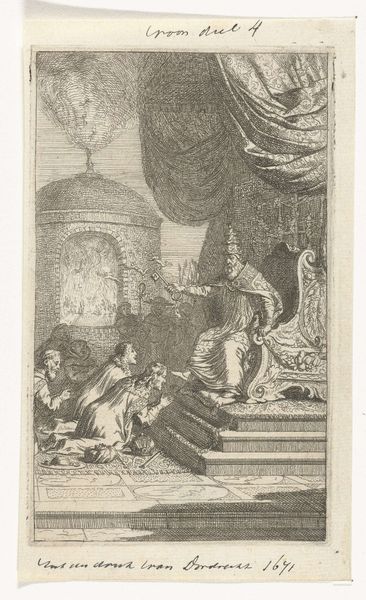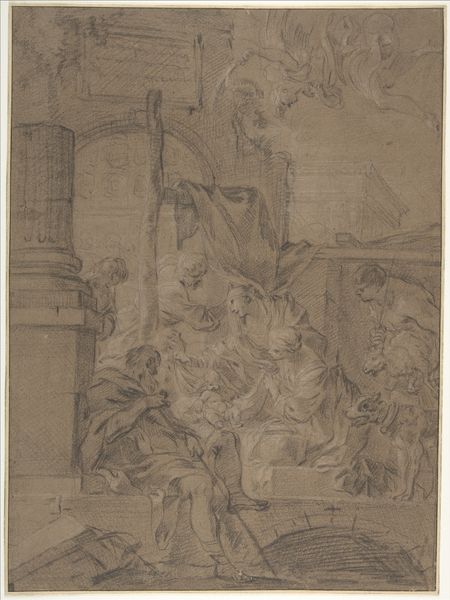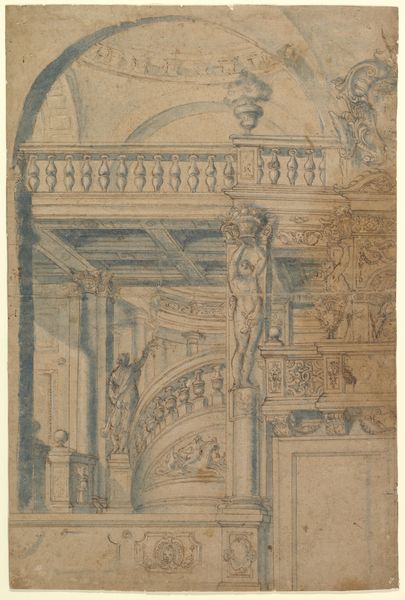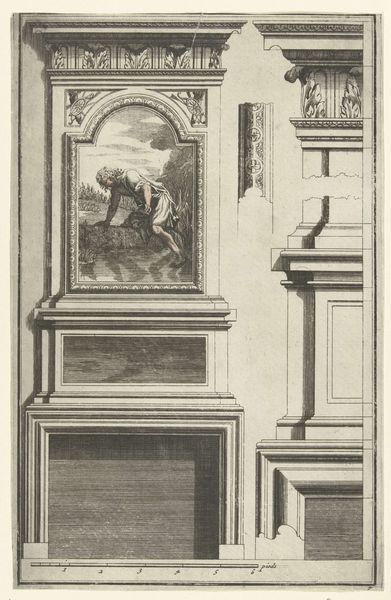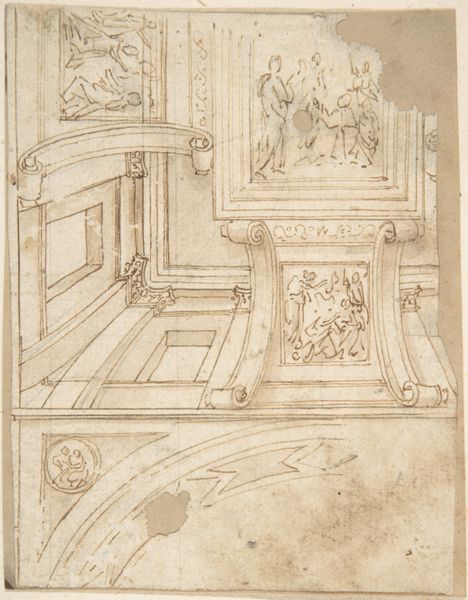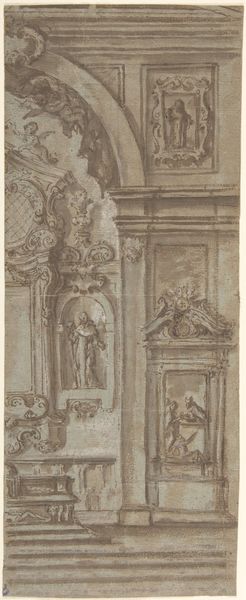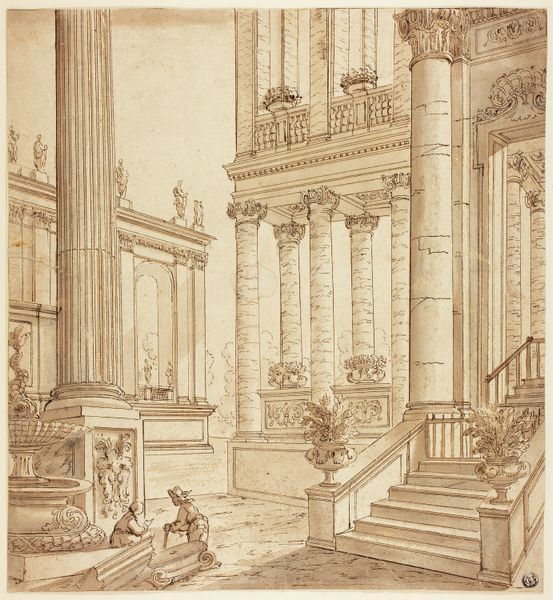
drawing, paper, ink, pencil
#
drawing
#
allegory
#
baroque
#
perspective
#
figuration
#
paper
#
ink
#
pencil
#
history-painting
Dimensions: height 104 mm, width 63 mm
Copyright: Rijks Museum: Open Domain
Editor: This drawing, "Allegorische voorstelling," created sometime between 1700 and 1749 by the Monogrammist WDW, uses ink, pencil and paper to create an allegorical scene. I'm immediately struck by how this image utilizes perspective, but I'm curious, what's your interpretation of it? Curator: Looking at this drawing, I'm drawn to the means of its production and the social context implied by the materials. The ink, pencil, and paper – relatively accessible materials – suggest a study or preparatory work. How might the artist’s use of readily available resources inform the creation of an "allegory," typically associated with high art and expensive media? Editor: That's interesting, I never considered the economics of art making! So, are you saying the chosen materials democratize the art or its message? Curator: Perhaps. It pushes us to question the boundaries between 'high' and 'low' art. The artist uses these basic materials to create a depiction of classical architecture and figures. Were drawings like these intended for wider consumption, maybe as designs for prints, thereby making allegorical imagery available to a broader audience? This shifts our focus from individual genius to a collaborative process of artistic production. Editor: So it becomes more about the circulation of ideas than the singular 'art object'? How does that relate to its allegorical nature? Curator: Exactly. And regarding the allegory, consider it within the social context. Allegories often served to legitimize power structures or comment on moral values. Think about who might have commissioned or used this image. What narratives were they trying to construct or reinforce? The choice of accessible materials may point to a strategic effort to disseminate specific messages more widely. Editor: This reframes my understanding. I always saw art as separate from its means of production. Curator: It’s crucial to recognize that the choices made in producing a piece reflect the intentions, resources, and the intended audience for it. Editor: Thinking about art in terms of material conditions offers a fresh viewpoint. Thanks!
Comments
No comments
Be the first to comment and join the conversation on the ultimate creative platform.

